Software(s) in the making
StraightLiner
combined room / loudspeakers acoustics inverse convolution filter computation software (a.k.a. "room equalization software")
Singing in your bathroom goes a long way as you use the acoustics of this tiny room as some form of a body of a musical instrument. Listening to your brand new hi-end speakers in the bathroom would be another matter. In the living room, the bathroom effect is still present, although weaker and our brain is trained to somewhat live with it.
StraightLiner attenuate short term echoes so as to relieve musical signal to the way it was recorded. From a small $10 - 25 m^2$ living room, the listening experience reach the level of fidelity of a much, much larger room, and even better by correcting the defficiencies of the loudspeakers, each channel individually, all at once.
It does so by computing a frequency equalization filter accurate enough to send pre-echoes which will reach your ears in a way as to annihilate the whole set of echoes the room reflect at this point in time, in a point of space (location of the calibrating microphone, your head), this in a perpetual manner.
In very short, to the sound engineer, home recorder or HiFi enthusiast what glasses are to the myopic.
More technically speaking, this software output both a minimum-phase, low delay filter and a linearized phase, nearly constant group delay filter.
The HiFi traditional weakest link comes to an end. Details of the sound-take becomes very palpable, the usual bottleneck of the room and speakers TOTALLY disapears with this high-accuracy algorithm.
It's not yet released due to a lack of time from the one hand and a potential for a probably not breathtaking but still valuable (at least from a mathematical standpoint) improvement in the hilbert transform, on the other hand.
Screenshots
First, the time and frequency responses of the room AND loudspeakers, combined. Good loudspeakers peak and dip in their response of about +/- 2 to 4 dB, the room, +/- 15 dB. Is the cost of separating loudspeakers and room response worth it? Got to finally read Gerzon paper, will see, à priori NO, not for a 12 to 15 $m^2$ living room. Sorry about the size, guys, I've been living nearly in the street lately.
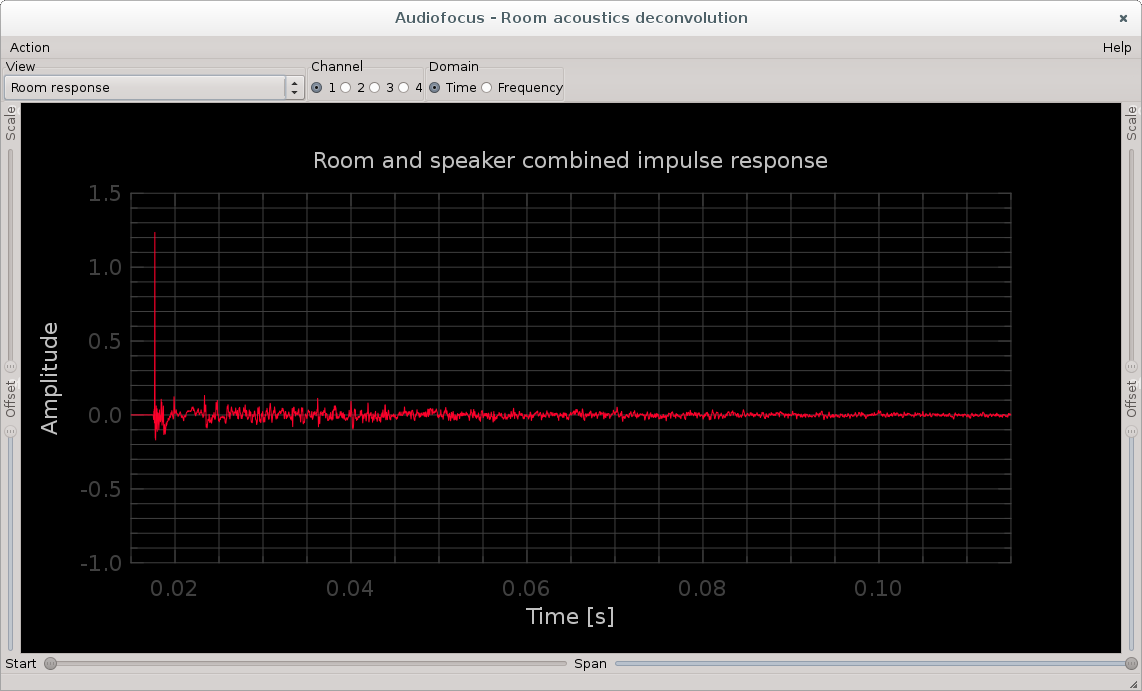
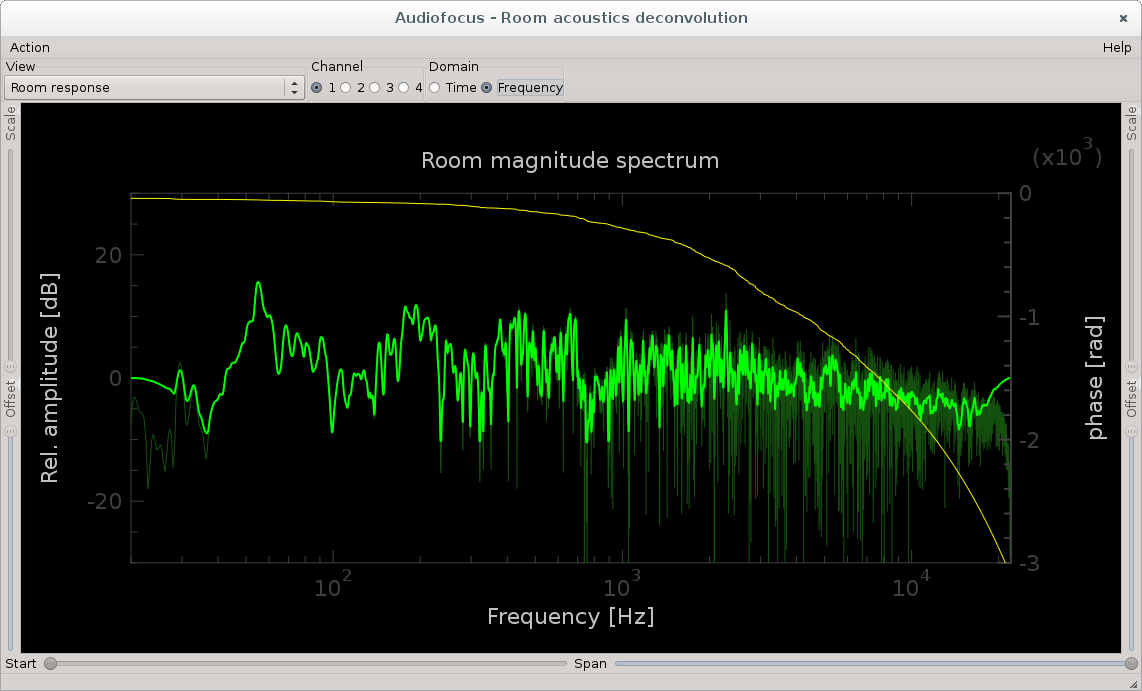
Here the first stage result, a minimum-phase, minimal delay filter. Hearing result is great, the bass excess of small living room is completely tamed, allowing to discover the low-midrange of your music. The flat frequency response provide a deeply analytical sound, very good for the sound engineer as it totally aleviate the room/loudspeaker bottleneck of the sound chain and lets THE SOUNDTAKE to become the new bottleneck. Much better than before. First of all, an analytical tool for professionals. The true HiFi lover, in search of realistic rather than esoteric sounding chain, may be highly attracted, though. At first bass seems weak, the whole sound of a flat frequ. response sounds much brighter than what you are used to, if not cold, even brittle sometimes on brightly recorded/mixed material. You can compensate for all of this earing habit change by tuning a 3 bands PEQ, adding a bit of bass beeing most of the time enough, sometimes inducing a gentle roll-off in the 15-20kHz range also help to soften the response.
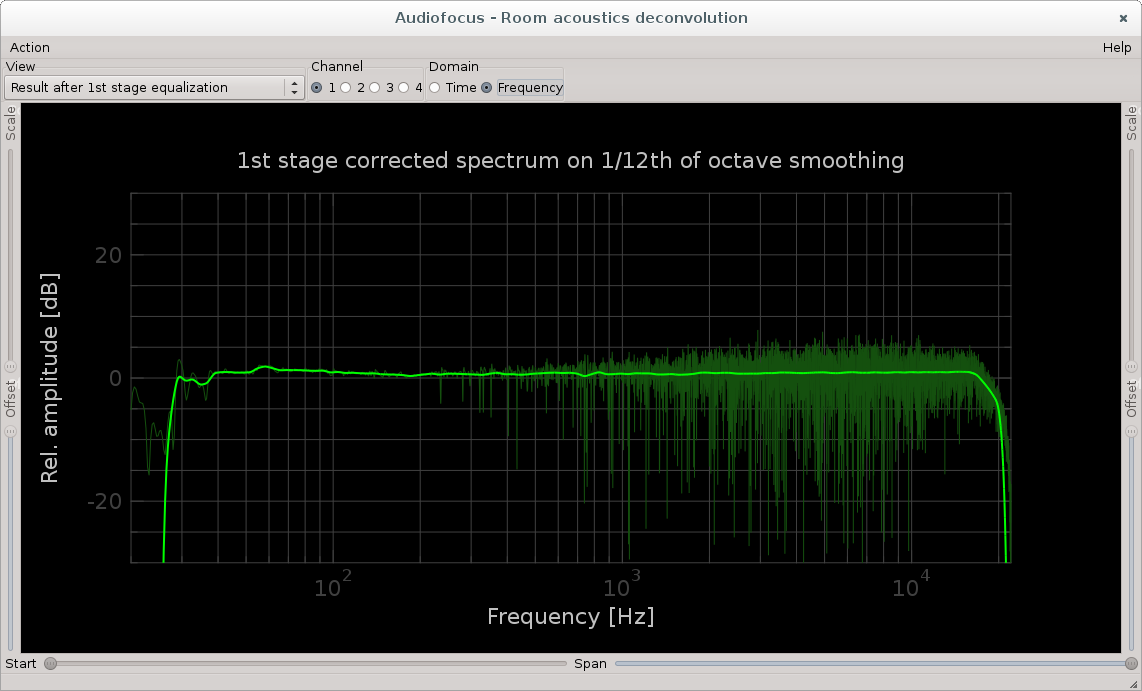
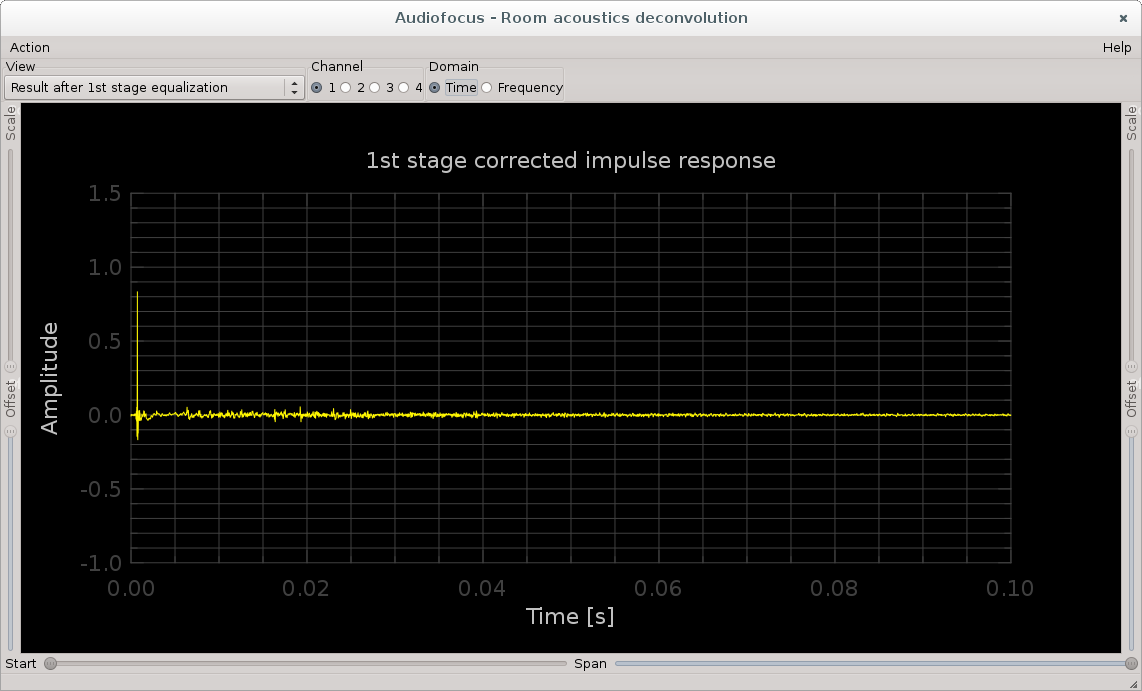
Here the second stage, linear-phase, nearly constant group-delay filter.
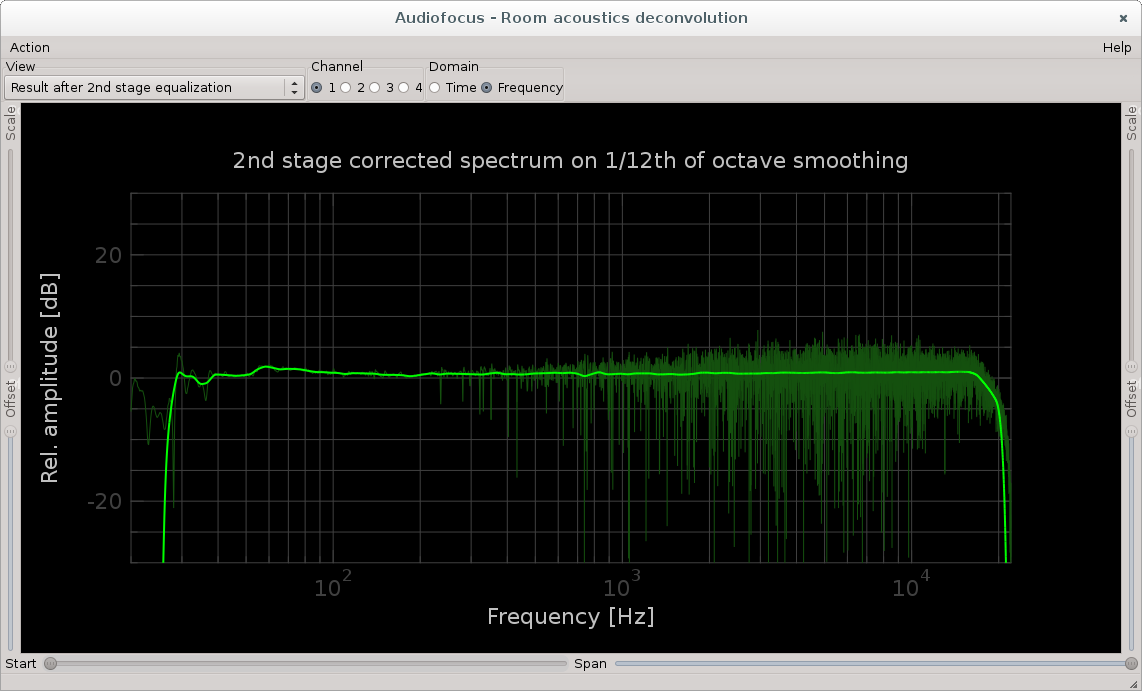
You can see that the impulse response matches the one of the ADC/DAC combination in our test signal path, nothing more anymore. We can't do better without sacrifying stability of the inversion filter, which cannot happen with this algorithm. The approximation error is spread out evenly as a small amplitude noise on the impulse response. Accuracy of the result is daunting. SOUNDSTAGE takes definitively its true meaning. Time accuracy, when done right, is really worth the investment.
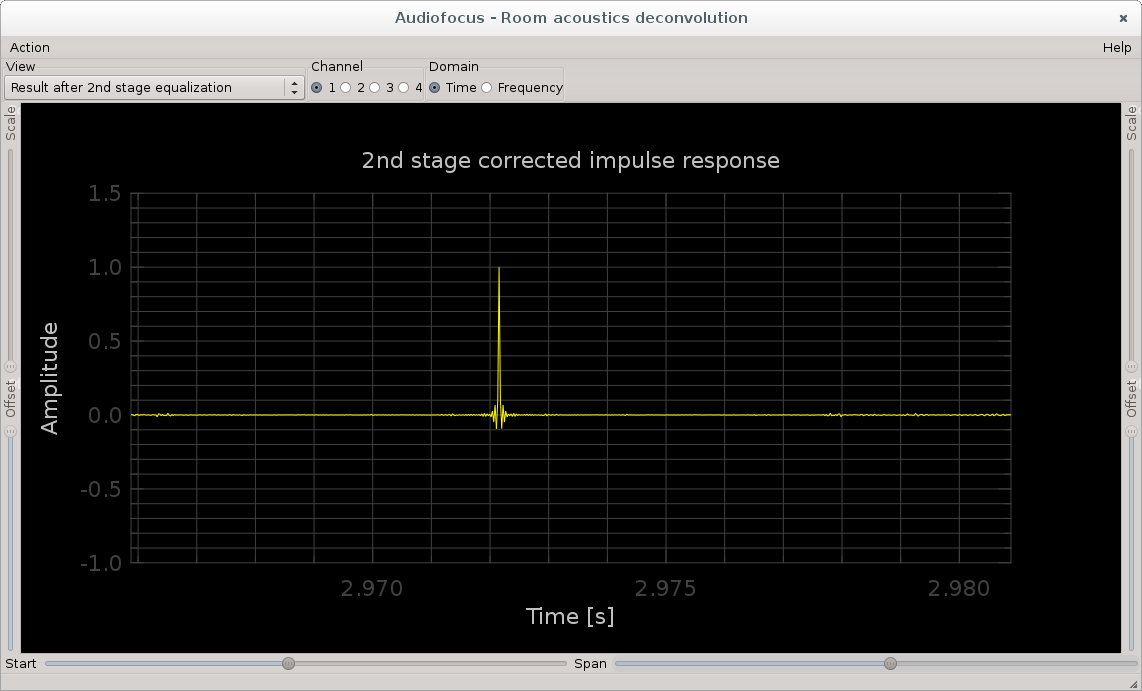
 Skip to main content
Skip to main content
Comments